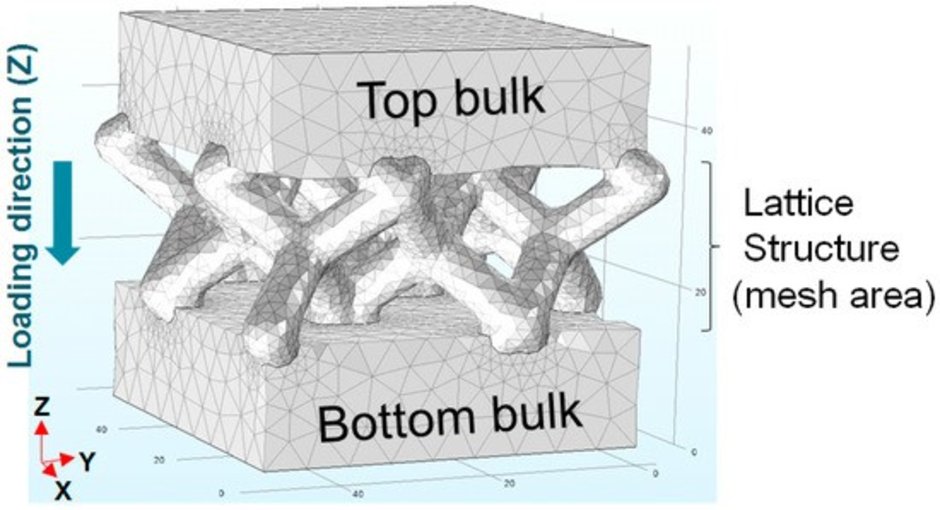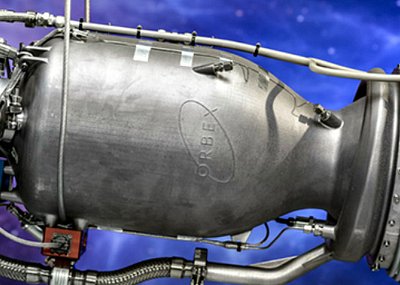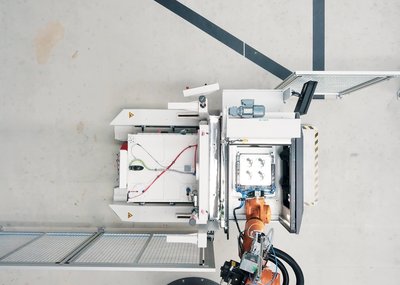3D printing is often used to produce molds for casting. In the case of sand molds, binder jetting is typically used; however, its high costs, due to expensive materials, need to be lowered, according to the authors of a study entitled “Mechanical Analysis of Ceramic/Polymer Composite with Mesh-Type Lightweight Design Using Binder-Jet 3D Printing.” In the study, the researchers investigate the mechanical properties of sand molds with a lightweight structure for low material consumption and short process time
Binder jetting is a faster method of making sand molds than conventional casting, but it’s still too expensive, according to the researchers. In the study, they work to find a methodology of the lightweight design in a smaller length scale for binder jetting 3D printing, such as a typical conformal lattice cell in metal.
“To investigate the mechanical properties of lightweight designs, we introduce a basic unit block sample of a ceramic/binder composite applied to a whole sand mold using a BJ 3D printer in this study,” they explain. “The selection of two different structures was just done in this research for the purpose of comparing a typical lightweight design for metal with our ideal structure. We also address geometrical effects, such as the size and shape of typical lightweight patterns provided by commercial DfAM software on the basis of mechanical property evolution.”
To study the basic design factors of a lightweight structure for a sand/polymer composite, the researchers introduced two types of lightweight structures: a box with square holes (Type-1) and a lattice with upper and bottom pads (Type-2). The specimens were 3D printed using a sand binder jetting 3D printer from voxeljet. A compression test was performed by placing the samples between circular steel plates. Each test was conducted twice for accuracy. Each sample was broken by initiation of cracks, and no creep was observed.
The researchers also conducted computational analysis in order to predict stress distribution and fracture under uniaxial-loading, and FEM simulations were carried out. Several major conclusions were reached from the study:
The strength of both designs significantly decreased with increasing volume ratio. The size of the inner hold in the Type-1 sample should be at least 2mm for taking out the inner sand powder cleanly. Although the Type-1 sample had higher strength, it was more difficult to take out sand particles from the samples than it was with Type-2. Therefore, future studies will focus on enhancing the low strength of the Type-2 sample.
With mesh-type lightweight structures, increasing pad thickness and decreasing mesh area results in increasing local stress concentration at the interface of the mesh and pads. Easy cracking is initiated at a comparatively weak boundary between mesh and pads in the case of thick pad thickness.
“Since a commercial software for topology optimization provides lightweight designs for rigid single component materials such metals or plastics, it is not suitable to apply the lightweight designs to a ceramic/polymer composite with different mechanical behaviors,” the researchers continue. “As a result, new types of light weight structures for sand casting molds are required to spread BJ 3D printing technology to the foundry industry.”
Finally, further work will suggest and evaluate the new lightweight and rigid design for additive manufacturing of a ceramic/polymer composite. It should reveal the correlation between structural and mechanical factors of the lightweight designs in detail.
Authors of the paper include Dong-Hyun Kim, Jinwoo Lee, Jinju Bae, Sungbum Park, Jihwan Choi, Jeong Hun Lee and Eoksoo Kim.
Source: 3dprint.com
×




